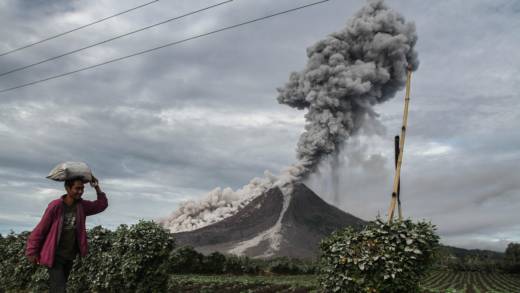A warming planet due to human-induced climate change will likely contribute to an increase in volcanic activity, according to a recent study in the journal Geology.
While a relationship between climate and volcanism might seem counter-intuitive, it turns out that pressure exerted by thick glaciers on the Earth’s crust — what geologists call “surface loading” – has an impact on the flow of magma below the surface.
The correlation affects “magma flow and the voids and gaps in the Earth where magma flows to the surface as well as how much magma the crust can actually hold,” the study’s lead author Graeme T. Swindles, an associate professor of Earth system dynamics at the University of Leeds, wrote in an email to Scientific American.
In the study published last month, Swindles’ team examined the geologic record of eruptions of Icelandic volcanoes 5,500 to 4,500 years ago – a period in Earth’s history when the climate was cooler, but still not a full-blown ice age. The level of volcanic activity was discerned by looking at the record of ash that settled on the peat bogs and lakes that fell over Europe, Swindles says.
Comparing the volcanic record with glacial coverage, the team found that the number of eruptions dropped significantly as the climate cooled and ice cover increased. The eruptions that did occur also tended to be smaller in magnitude.

